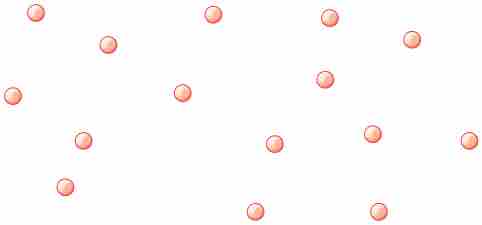The ideal gas law is the equation of state of a hypothetical ideal gas (an illustration is offered in ). In an ideal gas, there is no molecule-molecule interaction, and only elastic collisions are allowed. It is a good approximation to the behavior of many gases under many conditions, although it has several limitations. It was first stated by Émile Clapeyron in 1834 as a combination of Boyle's law and Charles' law.

Atoms and Modules in a Gas
Atoms and molecules in a gas are typically widely separated, as shown. Because the forces between them are quite weak at these distances, they are often described by the ideal gas law.
Empirical Derivation
Boyle's law states that pressure P and volume V of a given mass of confined gas are inversely proportional:
while Charles' law states that volume of a gas is proportional to the absolute temperature T of the gas at constant pressure
By combining the two laws, we get
where C is a constant which is directly proportional to the amount of gas, n (representing the number of moles).
The proportionality factor is the universal gas constant, R, i.e. C = nR.
Hence the ideal gas law
Equivalently, it can be written as
where k is Boltzmann's constant and N is the number of molecules.
(Since N = nNA, you can see that
Note that the empirical derivation does not consider microscopic details. However, the equation can be derived from first principles in the classical thermodynamics (which goes beyond the scope of this Atom).
Microscopic version
We have seen in the Atom on "Origin of Pressure" that
where P is the pressure, N is the number of molecules, m is the mass of the molecule, v is the speed of molecules, and V is the volume of the gas. Therefore, we derive a microscopic version of the ideal gas law